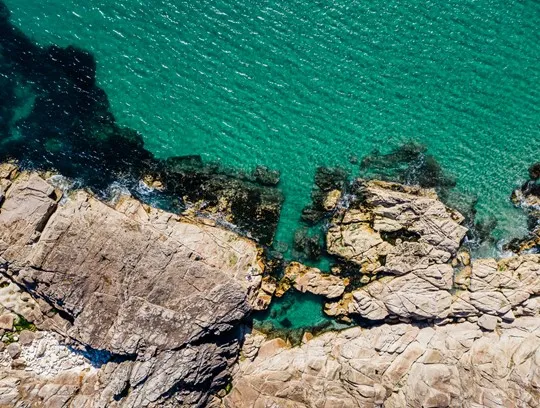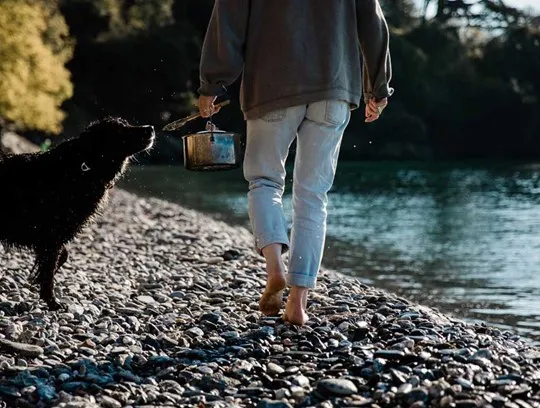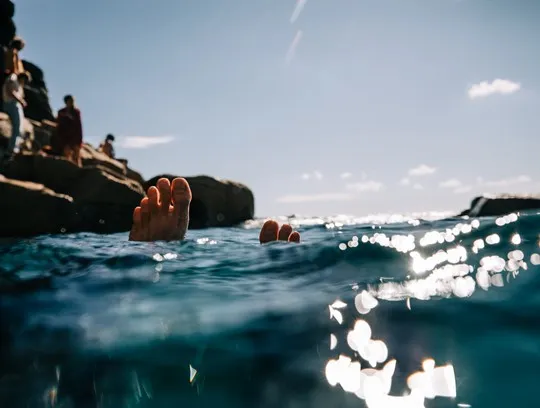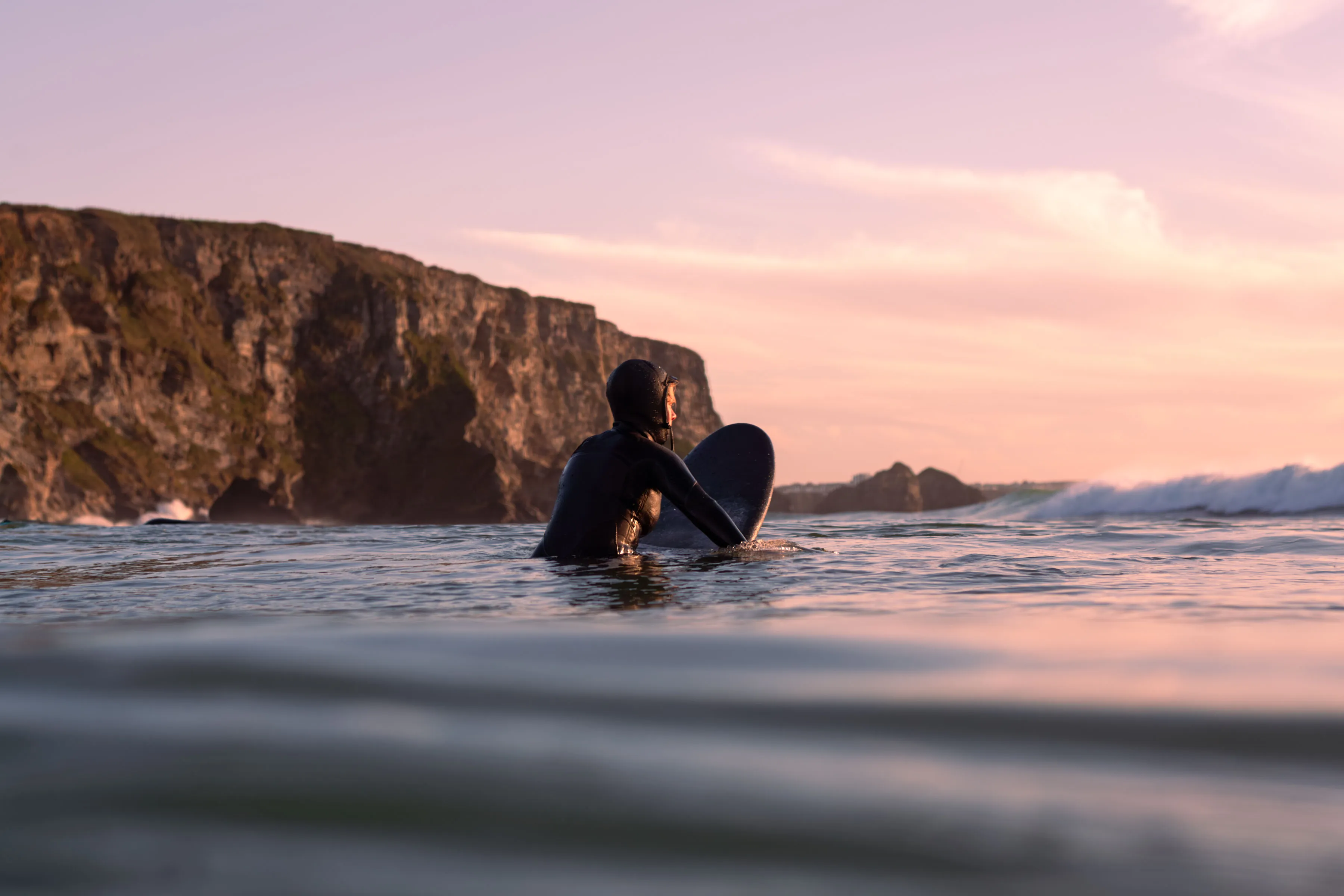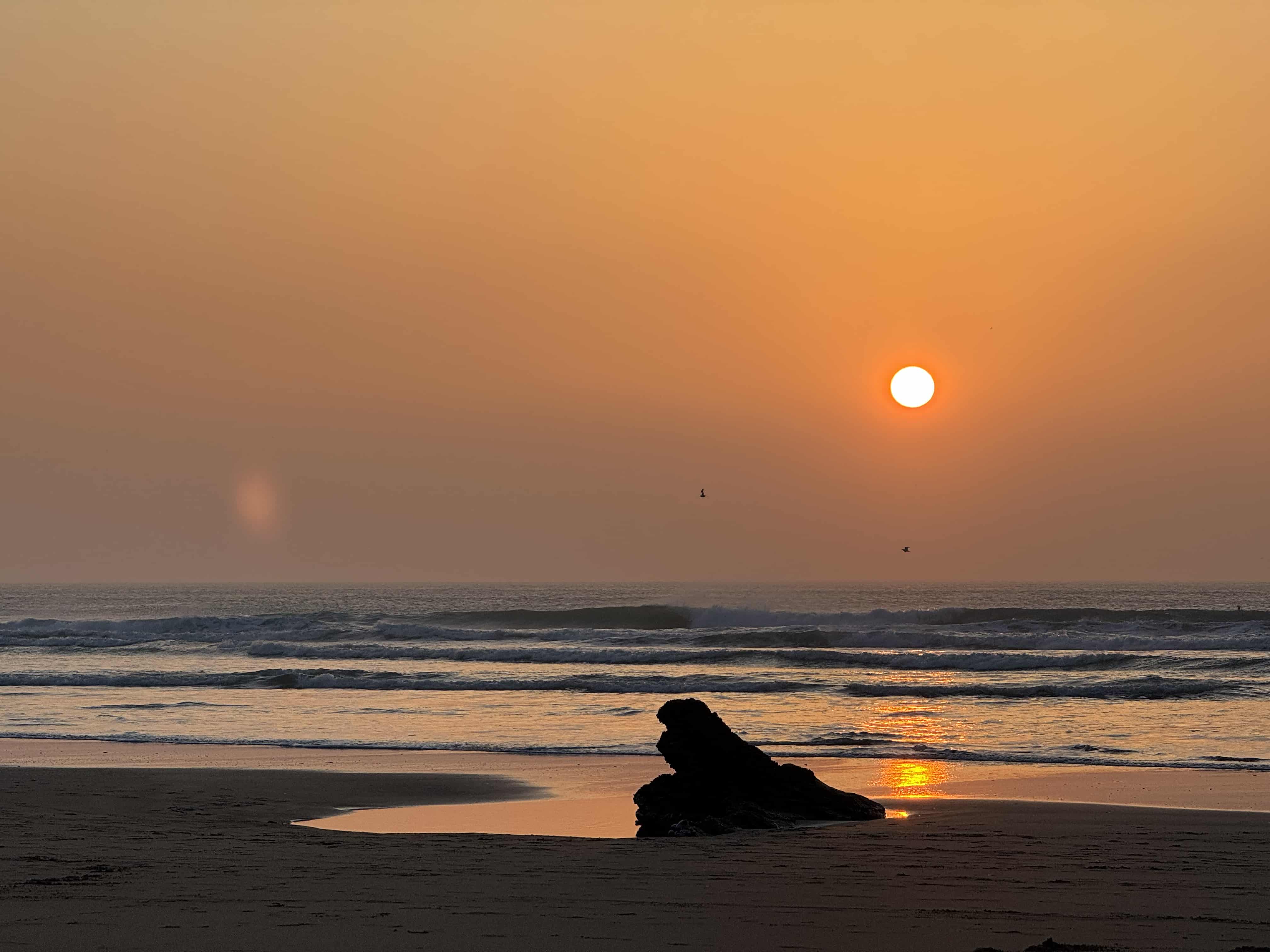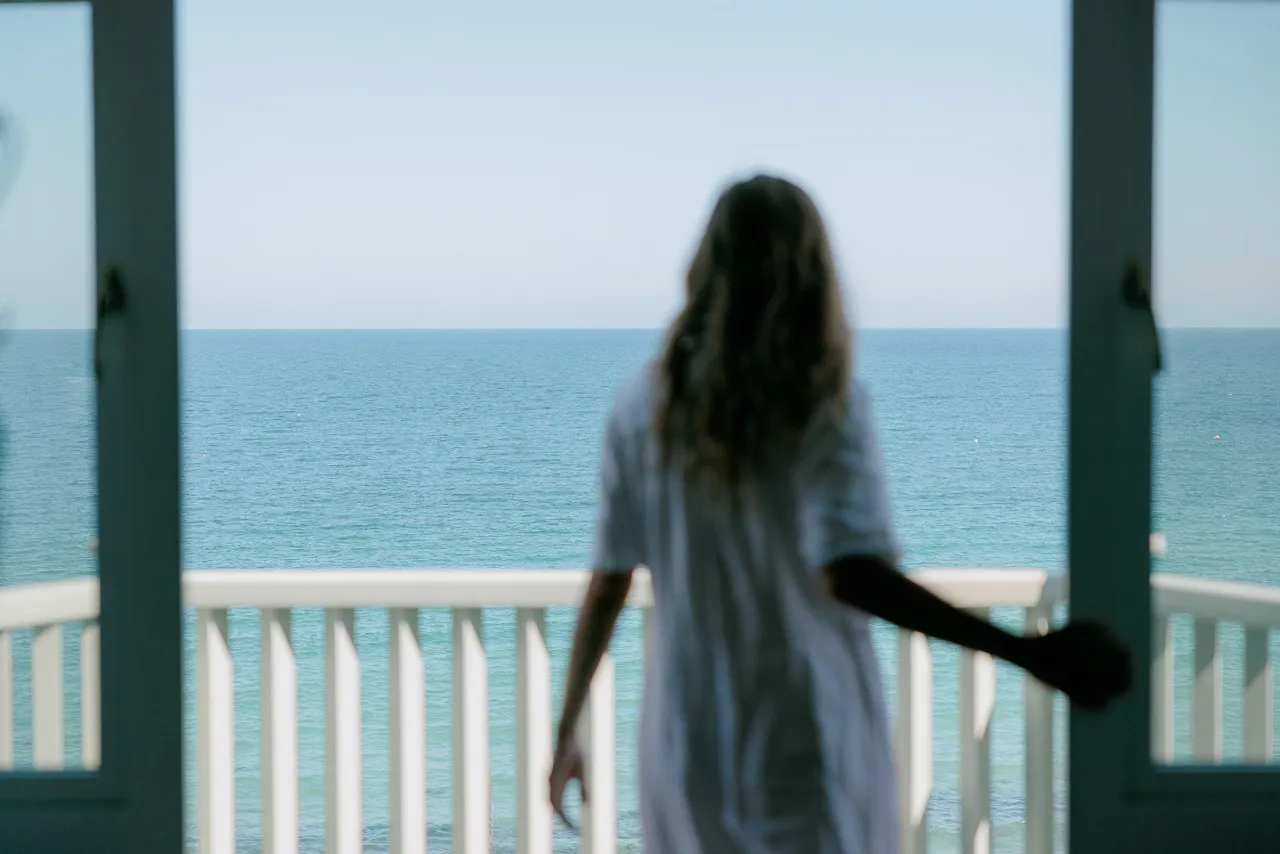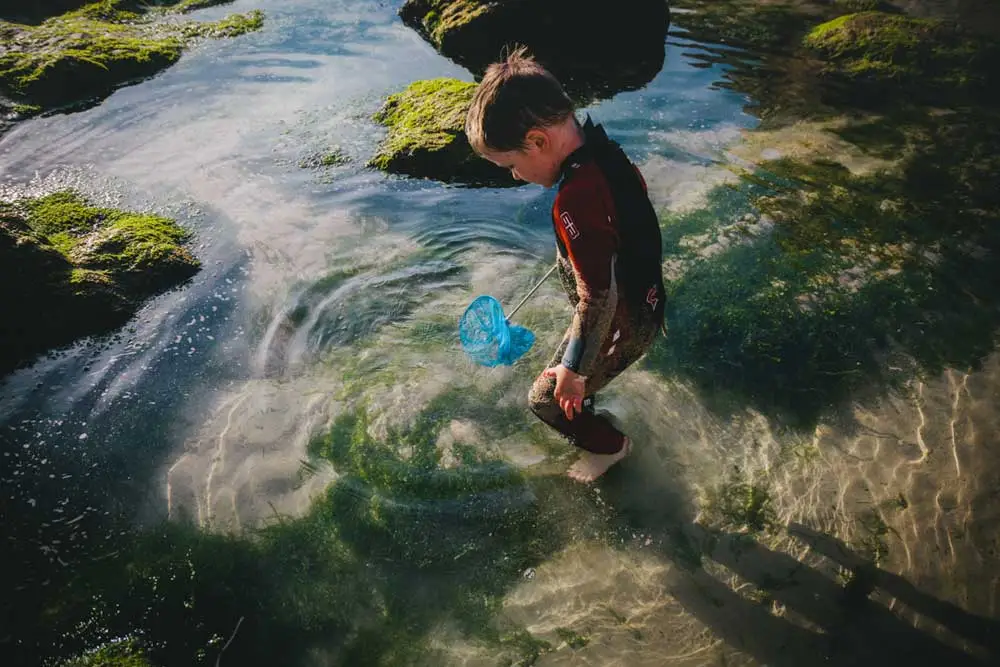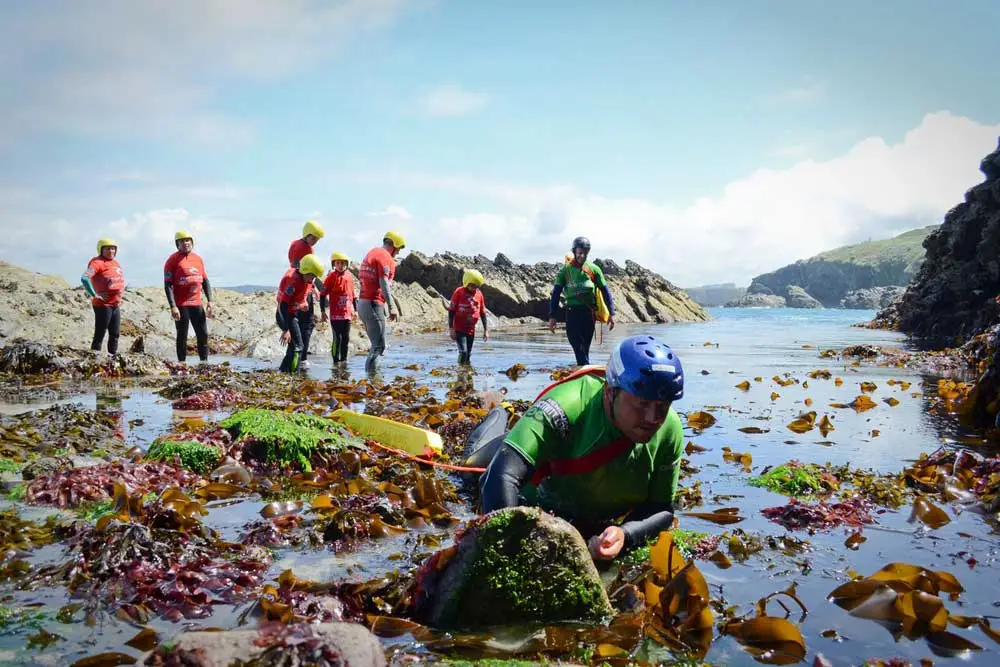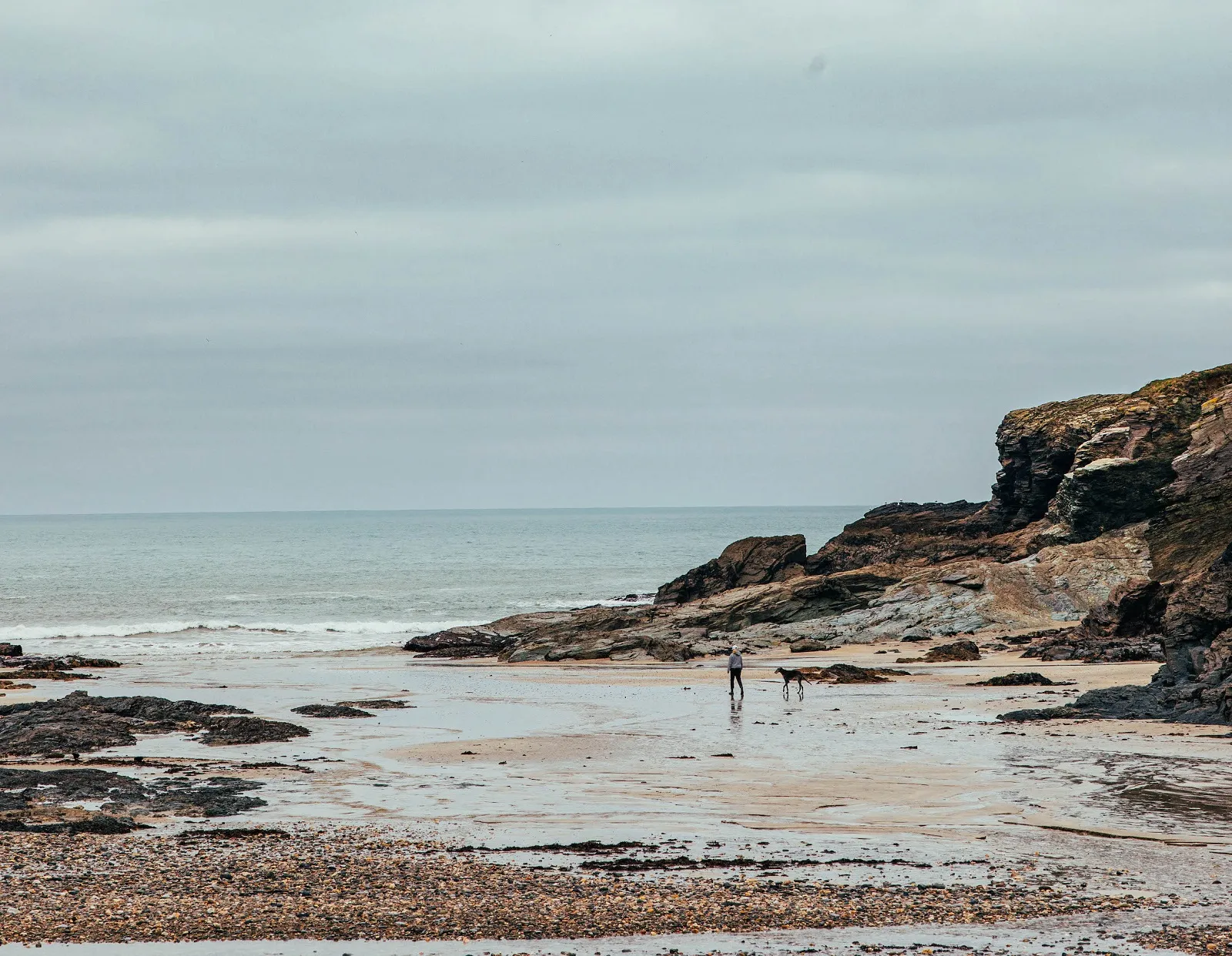Home / Ocean O’Clock
Ocean O’Clock
2nd March 2025
The rise and fall of the tides may be regular and predictable, but the worlds they open up is anything but. Indeed, when it comes to coastal activities – from shoreline yoga to rock pooling, snorkelling and coasteering – the lows are just as compelling as the highs…
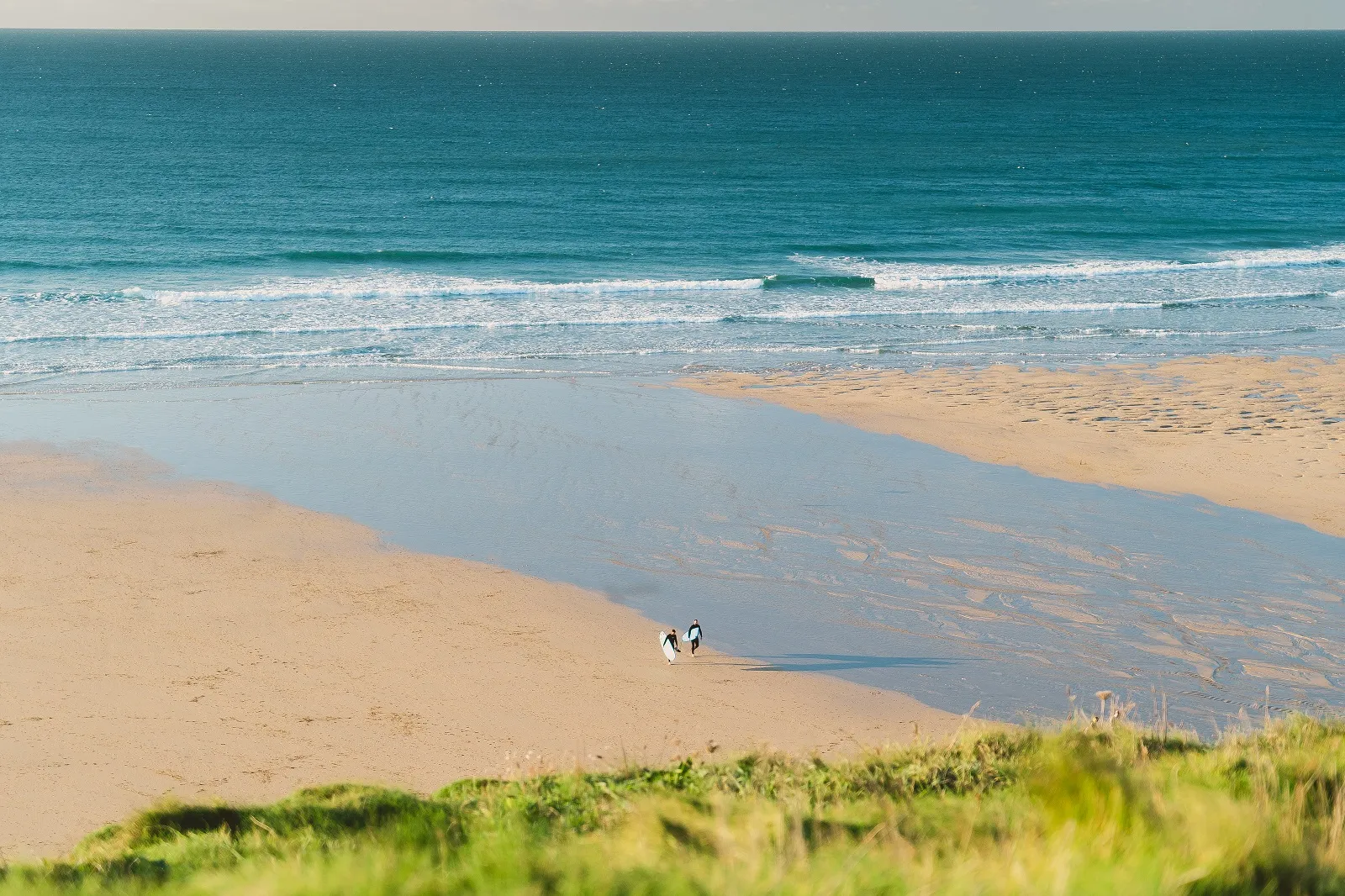
You take a stroll down to the beach and the tide’s out. A vast golden expanse stretches towards the horizon, the sky reflecting in a silver skin of water on the sand. White waves break far in the distance, beyond the silhouettes of rocks scattered in the shallows. Your first thought? That’s an awful long way to carry a paddle board, perhaps. But it won’t take long for that to change. Thanks to the celestial clockwork that drives the tides, that beach will be completely transformed within six hours, the sprawling sand little more than a sliver as the tidal region becomes a playground for fish and swimmers.
You’re probably aware that it’s the moon that shapes the tides, as its gravity literally pulls the water of the ocean away from the planet. You may not know that there’ll be two high tides happening at the same time, on opposite sides of the Earth.
“Take Whitsand Bay, which at low tide opens up to offer over three miles of stunning sand, from Rame Head to Portwrinkle.”
Few of us that visit the beach will be thinking about the impact of the moon, nor how our low tide is being mirrored at that moment by people in New Zealand. But the tides do serve as a metronome – not just to the Earth’s lunar dance, but to the minutiae of coastal life. By tuning into its rhythms, we gain access to a world of wonder.
Tidal Cornwall
The beaches of Cornwall are as wonderful as any. Take Whitsand Bay, which at low tide opens up to offer over three miles of stunning sand, from Rame Head to Portwrinkle. That epic scale is the perfect spot for a refreshing run or bout of yoga on the shore.
Fancy staying in Whitsand Bay? Have a look at our Whitsand Bay holiday properties.
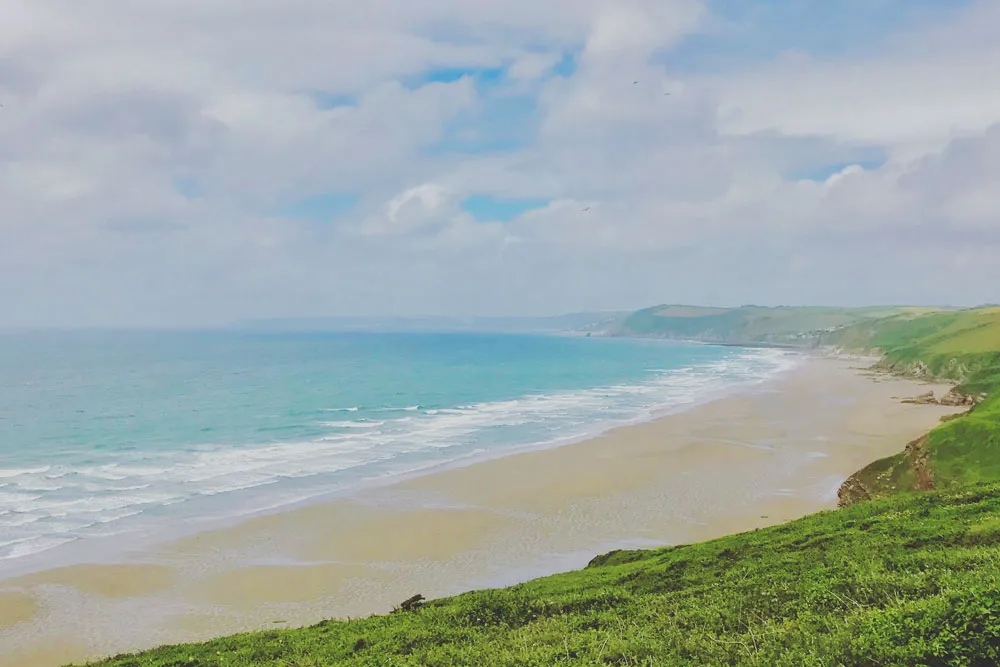
Being in the outdoors isn’t just about such simple beauty. It’s good for the nervous system, and offers a deeper sense of relaxation and escape, as you connect with nature, breathe the sea air and dose yourself with vitamin D.
“Focusing your mind on the minutiae of a rock pool is like shrinking and diving into a world of discovery.”
Vast beaches like this can be found all around Cornwall at low tide. Families may seek to spread out with a family game of cricket, or take the opportunity to walk round to hidden coves, revealed by the receding sea for just a few hours each day.
Magical minutiae
Low tide is also the perfect time to go rockpooling, and Cornwall’s beaches offer endless opportunities. On the North coast, great examples include Porth Beach and Pentireglaze Haven, a cove towards the north of Polzeath, joined to the main beach at low tide. On the South coast, there’s few places better than Falmouth’s Castle Beach, with an intricate network of pools spreading across the breadth of the narrow beach.
“And every now and then we get something really out of ordinary: octopuses and spider crabs, cuttle fish and conga eels. You never know what you’ll get.”
Focusing your mind on the minutiae of a rock pool is like shrinking yourself and diving into a world of discovery. Keen eyes can hope to find a magical variety of crabs, star fish and anemones, as well as elusive blennies darting among the weeds. And that’s just the start.
“People may just walk past rock pools and not even notice them,” says Dr Ben Holt, marine ecologist and CEO of the Falmouth-based Rock Pool Project, which runs guided rockpooling expeditions and research work. “But there could be loads of fascinating stuff living in there. Take the Cornish sucker fish, which has a pelvic fin that’s developed into a sucker, so it can stick upside down to the underside of rocks. And every now and then we get something really out of ordinary: octopuses and spider crabs, cuttle fish and conga eels. You never know what you’ll get.”
Go rockpooling with a guide, or even a guide book, and you’ll soon find that even the most common sights can be mind-blowing. Take limpets. At high tide they set off from their base on the rocks to forage for algae, returning as the tide ebbs. According to How to Read Water, a fascinating book by ‘natural navigator’ Tristan Gooley, limpets’ teeth are so strong that a piece of spaghetti made from the same material would be able to lift a Volkswagen Golf.
“A low spring tide reveals rock pools that usually remain underwater, exposing species you’d otherwise not see.”
The most important consideration when rockpooling is the tides. Spring tides are the best – that’s when the alignment of the sun, moon and earth means the sun’s gravity is adding to the pull of the moon, creating higher high tides and lower lows. A low spring tide reveals rock pools that usually remain underwater, exposing species you’d otherwise not see.
The other critical factor is footwear. “It can be tricky clambering over rocks and seaweed, so flip-flops and bare feet are an absolute no-no,” says Dr Holt. “Wearing old running shoes with decent soles gives you safety, confidence and freedom: you can explore the whole environment without worrying where you can and can’t go.”
Yet it’s not as if the high tide puts an end to the rock pool adventures. Anyone armed with a snorkel, mask and set of fins can explore those same magical eco-systems themselves – diving down into them from above.
Unique perspective
Other activities can be pursued at either low or high tide, with each offering a radically different experience. Take coasteering (coastal orienteering), in which a trained instructor leads a group in exploring the coast, picking a route through the water, among the rocks, to explore caves, coves and hidden channels. It’s a chance to see the grey seals and nesting sea birds from a unique perspective – and to rediscover a sense of freedom. “It’s about tapping into a childlike sense of adventure,” says Jack Day, activity instructor at the Newquay Activity Centre, which runs coasteering trips out of Newquay, including the nearby Gazzle and Towan Headland. “Albeit in a controlled and managed way, with carefully-planned routes and safety kit.”
“High-tide coasteering is more of a pure adrenaline fix, with spring tides allowing greater freedom in rock jumps of up to 25 feet, and swimming through caves.”
Day’s company partners with the Cornwall Wildlife Trust to run low-tide coasteering trips, which mix adventure – scrambling to explore the over craggy intertidal zone and riding ‘rapids’ as water is rushed between rocks – with added education. “The low tide reveals this whole other world,” says Day. “All the stuff under water is suddenly exposed. And that’s when nerds like me take people out to talk rocky shore life – all the barnacles, muscles, limpets and crabs, and how the sea birds interact with them. It’s all so alive.”
High-tide coasteering is more of a pure adrenaline fix, with spring tides allowing greater freedom in rock jumps of up to 25 feet, and swimming through caves. Day’s advice, whatever the tide: to go with a trusted guides, at your own pace, and don’t let any fears deter you from a new experience.
The lure of the moon
If you head to the beach at night and look at the moon, you may be able to predict the tides yourself. A full moon signals spring tides, as does proximity to a new moon. When the sun and moon aren’t reinforcing each other’s pull, we get tides with the lowest tidal range: neap tides. These are sign-posted by a half-moon, with either side bright.
Armed with that knowledge, you’ll already be more attuned than some of our brightest and most adventurous forebears. According to Scientific American magazine, the soldiers of Alexander the Great, for example, had grown up with the tide-free shores of the Mediterranean, so when they first encountered the extreme tidal range of the Indian Ocean, they believed it was the work of local gods, unhappy at their invasion.
“A perigean spring tide is an extreme tide, when a spring tide coincides with moon being at its closest point to earth.”
Johannes Kepler, the 17 th-century German astronomer, thought tides were caused by the breathing of the earth. René Descartes took a step in the right direction – asserting that the moon acted on the waters of the ocean, by pressure – but it was Newton who showed it was, in fact, down to lunar attraction.
There are other less regular lunar forces. A perigean spring tide is an extreme tide, when a spring tide coincides with moon being at its closest point to earth. Then there are super tides– a tidal extreme sparked by an 18.6-year cycle of the moon’s position. The last year of super tides was 2015. The next one to look out for: 2033.
The tide is like clockwork. Pick up a local tide guide, or install the My Tide Times app, and you can soon build a regular habit of checking what it’s doing. And with a bit of attention and planning, whether making use of the extra sand, or exploring our natural wonders on land or underwater, you can enjoy the impact of that celestial dance any time – come low or high water.
